|
Save the date: The 8th edition of Adelaide Connected will be held on the 7th of November 2024!
Venue and Program will be released later, but make sure you pencil this networking highlight in your calendar!
0 Comments
This is a message from our valued Adelaide Connected member itSMF Australia. Speaker submissions are now open for their 25th National Conference being held at The Pullman Hotel, East Melbourne on 21st & 22nd August. They are looking for quality submissions to complete what is sure to be an exciting Conference Program. If you are interested in speaking at Service Management 2024 in Melbourne, then click on the "Streams & Submissions" button for further instructions and to be considered for the remaining speaker slots. The annual Service Management awards are also open for nominations, if you have been part of or aware of an awesome project why not nominate for an award, there are multiple award categories for teams and individuals. itSMF Australia look forward to your submissions! Use the "Streams & Submissions" button below to find more information and make a submission for your talk. There are three streams at the SM Conference 2024, and submissions to present at Conference are open now.
This year, to shape our program, we have looked to our itSMF members and 2023 conference attendees to tell us what our service management community is curious about and the content they would like to see delivered by their industry peers at Service Management 2024. We encourage everyone to use the suggestions as a guide, not a rule, when considering speaking submissions. Themes from our community you can submit for:
If you are thinking of speaking, submit now as spaces are limited. Submissions are open until 20th May, 2024 – we look forward to hearing from you!
One of the reasons we decided to ask Anton to speak at "Unlocking Australia's Future: Exploring the Power of AI", is that he has been consistently calling for action from federal, local and business policy makers to invest in sovereign AI capability, research and commercialisation. We took some quotes that Anton posted or shared in his LinkedIn feed to give you an overview of the state of things in Australia.
Unlocking Australia's Future: Exploring the Power of AIEmbark on a journey into the heart of innovation as we delve into the realm of Artificial Intelligence (AI). Australia stands at the precipice of unprecedented opportunities and challenges, poised to shape the future of our economy and society through the transformative power of AI.
Join us for an immersive event where we invite you to witness firsthand the potential of AI to revolutionise industries, enhance productivity, and drive economic growth. This is not just a moment to observe; it's a call to action. Australia's position on the global stage hinges on our ability to embrace and harness the power of AI-driven technologies. In the spirit of collaboration and exploration, we are thrilled to present three visionary leaders at the forefront of AI research and application. Drawing from their diverse expertise and shared passion for innovation, they will illuminate the current landscape of AI in Australia and chart a course towards its promising future. Prepare to be inspired as each speaker takes the stage to unveil insights, breakthroughs, and challenges within their respective fields. From cutting-edge research to real-world applications, their presentations will ignite your curiosity and spark meaningful conversations. But that's not all. Following their individual talks, our esteemed speakers will come together for a dynamic panel discussion. This interactive session is your opportunity to engage directly with these luminaries, posing your burning questions and gaining invaluable insights into the trajectory of AI and its impact on our lives. The Adelaide Connected Committee likes to acknowledge Sofitel Adelaide, for kindly providing a Deluxe King Room to our keynote speaker Michael Bunting. Allowing our guest of honour to indulge in a luxurious 5 star experience at a stone's throw from the Adelaide Convention Centre. Thank you Sofitel, for supporting the Adelaide business and information services communities!
Attendees to the 7th edition of Adelaide Connected will receive the latest book of the keynote speaker Michael Bunting and co author Carl Lemieux, called Vertical Growth! Please read on for a peek summary of this book and to get an idea of what vertical growth is all about! Summary of Vertical GrowthOver the past two decades of leadership development researching, teaching, and writing, we have learned that developing great leaders is not an intellectual or skills challenge. It is not just about knowing evidence-based leadership techniques and theories. Despite the fact that great leadership practices and techniques are rather obvious, we find no shortage of poor leadership, even in organisations that have invested millions in leadership development. The primary reason is that most of the focus is on horizontal development, and little to no attention is given to vertical growth. We define horizontal development as gaining new skills and acquiring more knowledge to bring about a new competency. Vertical growth is much deeper and involves developing new mindsets, insights, and deliberate growth practices to shift our thinking and behaviour in a sustainable way. It is as much about unlearning existing habits as it is about developing new ones. Vertical growth fundamentally depends on self-awareness as the starting point. Self-awareness is the ability to look within ourselves honestly and to develop a much greater understanding of the unconscious drivers and values behind our thoughts and behaviours. In terms of leadership development, personal behavioural change, or culture change, research shows that horizontal development is just not enough. Horizontal skills and knowledge compete with fears, limiting beliefs, and other mental models that keep us stuck in habitual patterns and reactive loops. Seeing and changing these loops is the function of vertical development. Horizontal development is like having a computer operating system, such as Microsoft Windows, and adding apps and programs to it like MSWord, Teams, WhatsApp and other useful programs to facilitate our work. But vertical growth is about changing the entire operating system to generate more power and manage greater complexity. That then enables a more advanced use of the apps and programs. Through vertical growth, we escape one of the biggest trap that keeps leaders and organisations stuck: image management. This refers to the time and energy we waste in organisations on blame, denial, deflection, defence, gossiping, politics, saving face, covering up our weaknesses, and other fear-based strategies to make ourselves feel safe or look good. This arrests growth, damages leadership credibility, shuts down innovation, and impacts mental health, while inevitably keeping relationships superficial. One research study we performed involving more than 5,000 people from various global organisations indicated that image management sucks up about 40 percent of people’s time and energy on average. This is a staggering waste of time and energy, costing billions of dollars. When leaders grow vertically, this enables them to inspire and lead their teams from a psychologically safe space. Furthermore, with vertical growth tools and practices, they are able to systematically transform toxic cultures and improve organisational behaviour and performance. In this summary you will learn:
Complete SummaryThe Vertical Growth Imperative Horizontal development is developing new skills and acquiring more knowledge to bring about a new competency. While improving horizontal competencies may require repeated practice, it typically requires no growth in self-awareness or self-regulation. Easy examples would be learning planning skills, or learning how to master MS Word or Excel, developing strategic planning skills, or even learning coaching skills. Vertical growth involves both downward seeing and upward growth. We see downward (vertically) into our unconscious patterns of thoughts and behaviours and learn to transform them with open awareness, patience, and compassion. The more we do this, the more we increase our ability to grow upward in the direction of our values, aspirations, and ideals. Through vertical growth, we are able to train our mind to engage less in the reactive and programmed algorithms of our mind and body, and more into a deliberate and flexible set of behaviours based on our aspirations and values. We could briefly summarise the two forms of development as:
In the arena of leadership development and culture change, investing in horizontal development without vertical growth is largely a waste of time, money, and energy. The engine of horizontal development can’t run efficiently without the fuel of vertical growth. The Mindful Leader Matrix The Mindful Leader Matrix is a tool we use for both personal transformation and organisational change: The Mindful Leader Matrix can be summarised as follows:
Why Leaders Struggle with Walking Their Talk Why do some people adhere to virtuous leadership principles like honesty, generosity, kindness, or curiosity, even under pressure, and some people don’t? Why do some people see value in virtues, while others stay invested in old patterns? Why do some people think they are acting from these virtues when they are not? Why are some people more honest with themselves than others? The obvious answer, of course, is that incongruent, un-self-aware leaders, no matter how skilled and competent, are lacking in vertical growth. Adult development psychologist Robert Kegan developed what he termed “Subject-Object theory,” which gives a model of how the human mind develops vertically over time. “Subject” stands for things people are not aware of and fused with. “Object” refers to things that people can reflect on, handle, look at, take control of, or be responsible for. The process of vertical growth is about making “object” what we were previously “subject” to. Babies start at stage zero of development, completely subject to their reflexes. They cry, urinate or kick with no conscious awareness or control over these natural reflexes. The first stage of development, the ‘impulsive mind’, starts around age two, when the child can begin to hold her reflexes as object. She is subject to her impulses — like grabbing from another person’s plate. Before too long, the impulsive mind naturally develops into the self-centred mind. The self-centred mind is subject to our desires, and we don’t have the awareness or discipline to put them aside. At this stage, there is little to no empathy for others. The value system of people in the self-centered mind is “getting what I want.” As most people mature, they naturally move into a third stage called “socialised mind.” In this stage, we begin to have control over our own desires in order to fit into a family, group, team or organisation. We are able to have empathy for and connect with others. However, this is not necessarily driven by a selfless sense of care for others. Rather, it is usually about us seeking approval and belonging. In socialised mind, our sense of self-worth comes from other people, rather than internally. The shift from socialised mind to what we call self-examining mind begins when we ask the question, “What is important to me and what do I stand for aside from what anyone else thinks?” We connect with our own heart and find our own values, our own life compass. The self-examining mind can see its need for external validation in the socialised mind. Once that need can be seen as object, we can consciously choose our own values and adopt behaviours that are best aligned with what is most important to us. We stop being so swayed by what society values and choose our own path in life. In this more self-aware stage, values are not only clear and self-confirmed, but are also utilised as a means to consciously interrupt fear-based, habitual reactions. Over time fear is reduced in the mind and body, while awareness, inner stability and ease increase. Here, we begin to really walk our talk. In the highest and rarest stage of adult development, what we call the awakened mind, one develops the understanding that our awareness itself is closer to who we really are than our values and thoughts. We develop greater flexibility where we become unattached to identity and roles, shifting and updating our mental models to best respond to life’s challenges and changes in an objective way. To lead effectively, it’s critical that we live from at least the self-examining mind and become very clear on who we are, what we stand for, and the core values that govern our behaviour and decisions. We must cultivate the ability to withstand disapproval and still stay true to our principles. This is how we self-author our lives and discover a much deeper congruence within ourselves. How Values Help Us Grow We define values as “virtues or human qualities that, when cultivated, create long-term harmony within us, and connection, trust and harmony in the environment or groups we live and work in.” Values help us to be happier by cutting through our mind’s conditioned responses to whatever we experience in life. Following values also makes us more engaged with and committed to our work. This introspective work behind identifying one’s values is key to becoming consciously developmental while fostering psychological well-being, both foundational to achieve a self-examing or awakened mind. Clarifying one’s values typically requires many iterations and requires us to ask fundamental questions such as:
Choosing Your Growth Values When we meet new clients who are in the socialised mind development stage and we ask them about values, it is rare for any of them to clearly express their values. Those who can express them, typically view them as a personal brand, and assume that they live them unquestionably in all circumstances. Ironically, their values appear to be used as an image management tool, instead of a daily growth practice. Growth values explicitly invite us to acknowledge the gap between our best intentions and some of our behaviour. They invite us to consider what qualities we most want and need to develop to overcome the fears, attachments and assumptions detracting from our lives. On a personal level, if you struggle with impatience and anger and begin to acknowledge the negative impact this is having on your life and leadership, you might choose “patience” or “kindness” as a growth value. Or if you find yourself constantly avoiding conflict and you fully realise the enormous cost this is having on your mental wellbeing and leadership, you might choose honesty as a growth value. (Interestingly, few of our new clients realise that conflict avoidance is in fact an integrity/honesty values violation.) Committing to Action Values are far more than lofty, intangible ideals. When applied properly, they are living, breathing forces that direct our behaviour. Here are a few questions to help you gauge whether or not your values are alive in your life:
If you struggle to answer these questions—as most leaders do—there’s a good chance that you’re not clear on your “talk,” nor do you have an aligned development practice or “walk.” The result, as researched by my co-authors Kouzes and Posner, is a loss of trust and credibility among those you lead. It’s pointless to choose values without a daily commitment to deliberately cultivate that value in action. People don’t experience your aspirations—they experience your behaviour. The point of holding values isn’t to pat ourselves on the backs and assure ourselves that we’re good people. Rather, it’s to help us identify our values breaches, address them, and change our behaviour to grow in the direction of our values. Growth values are not a statement of who we already are, but rather areas which we deliberately choose to cultivate. By taking committed action in the direction of our values, our cognitive dissonance decreases while our inner wellbeing increases. And ultimately, the more closely we align our behaviours with our values, the more we create a healthy environment for all to grow and lead meaningful lives. The Role of Mindfulness in Personal Growth When working or living under challenging conditions or perceived threats, our reactive “fast pathway” brain can easily kick in. When it does, our noble intentions can easily fly out the window in the service of protecting ourselves from emotional or physical discomfort. Training the mind to non-reactively and non-judgmentally observe our mental and emotional patterns is therefore the hidden gem to cultivate self-awareness and self-regulation, which are the cornerstone to sustainable vertical growth and value-based living. Mindfulness training has been around for millennia and has been popularised in recent decades as powerful way to train the mind and mitigate the undesirable reactions of our unconscious mind. We’ve been applying it within a leadership and organisational context for the past twenty-five years. We define mindfulness as maintaining an openhearted awareness of our thoughts, emotions, bodily sensations and environment in the present moment. It is paying attention in the present moment purposefully, warmheartedly and non-judgmentally. It is experiencing, knowing, and accepting the present moment as it really is—not how we want it to be, think it should be or perceive it to be, but as it really is. We can be mindful in any life situation, from driving, to swimming, walking, conversing, eating, writing, etc. Through meditation and other developmental mindfulness practices we become more aware of our habitual reactions, expand the gap between stimulus and response, and make wiser choices. We learn to see the innermost motivations for our actions and become more honest and compassionate with ourselves. We learn to be the observer of our perceptions, thoughts and judgments, rather than identifying with them and getting caught up in the mental stories we create. Developmental mindfulness training helps us develop:
Using developmental mindfulness, we can train the mind to stay present, curious, balanced, aware, and connected—not just when we feel good, but especially when we feel discomfort. As research shows, heightening our present-moment awareness increases our emotional distress tolerance, which in turn decreases our chances of reacting from habitual, conditioned responses to emotional discomfort. Overcoming Numbness and Denial Carl Jung, one of the fathers of modern western psychology, coined the phrase “the shadow” in reference to what we explore on the left-hand side of the Mindful Leader Matrix. What he meant by this is that we humans have this capacity to hide and deny our own behaviour, feelings and beliefs from ourselves. We keep them in the shadows of our mind through defence mechanisms like numbing, denying, blaming and justifying, instead of bringing them into the light of our awareness. Literally everything we are “subject to” or fused with, is held in the unconscious, which is why Jung was so insistent that we look at the shadow element of our unconscious and deal with it in order to grow and rediscover wholeness. In adult development language, we would say, “Until we make our shadow object to ourselves, we will continue to be subject to our shadow.” In other words, vertical growth is heavily dependent on our willingness and ability to look at, work with, and take accountability for our shadow. However, in order to do that, we have to be able to withstand the difficult feelings that arise when working with the shadow, and not back away from them. Unfortunately, the human mind has many mechanisms to avoid difficult or unpleasant feelings. To the untrained mind, the common solution to dealing with unpleasant feelings is numbing. Instead of looking inward, we numb out the unpleasant with obvious things like food, TV, smartphones, overwork, alcohol or sex. We may also engage in less obvious patterns like controlling, manipulating, avoiding, gossiping, lying, rationalising, one-upping, etc.—anything and everything to escape the unpleasant. Numbness is like a fog in our brain. It covers up our shadow, but it doesn’t resolve it and so it remains in the unconscious, generating stress and lifelong cognitive dissonance. In the process, it also obscures the sun of connection and joy. With numbness we may avoid immediate pain, but the price tag is that we are less and less able to experience happiness, growth and fulfilment. We refer to numbness and denial as the “first line of defence” against seeing and owning our shadow. Our mind has an extraordinary ability to literally be in numb denial of what we are doing—like a person shouting, “I am not angry!” If we’re able to break through this first line of defence using developmental mindfulness, and acknowledge our unconscious behaviour and the associated painful feelings that come with that admission, a second line of defence usually kicks in: justification, rationalisation, and blame. These are designed to once again numb us from the shadow. Seeing and Resolving the Shadow Initially, when we begin exploring and owning our shadow, it can be very challenging. However, seeing and understanding our whole selves, warts and all, is the best long-term path to happiness and fulfilment. It enables a profoundly mature and relaxed mind, free of defence and denial. Exploring and resolving our shadow requires curiosity and compassion. With curiosity, we expose our unconscious fears, attachments, and assumptions. With self-compassion, we help ourselves accept and bear the fear and pain that arises when we see and own the truth of what is driving our dysfunctional behaviour. We are allowing our evolved and wiser brain (slow brain) to observe the older reactive brain (fast brain) to enhance emotional regulation and then re-align our behaviour with our values. In today’s turbulent organisational context where human suffering is on the rise, these deeper practices found in clinical psychology and contemplative practices are increasingly required to help people find the psychological well-being to support healthy organisational performance. The Mindful Leader Matrix gives us a framework for exploring our shadow mindfully and resolving it so that we can more easily live up to our aspirations. We can actually take any aspect of our lives that we want to improve and take it through the Mindful Leader Matrix. First, we start in Quadrant 1 by describing how we want that part of our lives to be. We identify our growth values and write our aspirational statement. Next, we move to Quadrant 2 and attach behavioural commitments to our growth values—in other words, the actions we want to take to move towards our aspirations. Then we move to the left side of the matrix to explore our shadow. In Quadrant 3, we identify and take accountability for the specific behaviours that are incongruent with our growth values. Lastly, we explore our fears, attachments, and assumptions in Quadrant 4, which are creating our misguided behaviours in Quadrant 3. Using the Mindful Leader Matrix, we can consciously and systematically explore and resolve our shadow in order to transform our behaviour for good. Vertical Growth in Teams and OrganisationsSetting and Living Team and Organisational Values On a personal level, the Mindful Leader Matrix helps you transform your values and aspirations into living, breathing, measurable forces in your life. On an organisational level, this is often referred to as bringing the values from the wall onto the floor. In other words, the values on the company website are actually lived and taken seriously in the organisation, serving as a catalyst to deliberately develop individuals and teams. Have you ever worked in an organisation that has a great sounding set of values, like “Integrity,” “Inclusion,” “Teamwork,” “Curiosity,” “Transparency,” “Respect,” etc., that failed to make it meaningful in terms of concrete action, leadership role modelling, rituals, rewards, and accountability? It’s not enough to simply state values and ideals. Organisational values must be backed by committed actions and behaviours, with real rewards and accountability. This lack of concrete role modelling, rituals, rewards and accountability is the core reason why it’s so normal in most organisations to find the values on the floor being different from the values on the wall/ website. This gap between what we experience and what we aspire to in our organizations can only be resolved through a values-aligned, vertical growth mindset, psychologically-safe culture. And this can only be achieved by leaders who are willing to do the vertical growth work needed to role model their own stated values, with alignment and consciousness of the organisational values. A vertical growth mindset-organisation is one where everyone sees and accepts themselves as a work in progress. They are more concerned with personal and team growth than protecting their image or status. They make a genuine daily effort to live and lead from a deeper sense of purpose, intent or set of values. This cuts through image management and unleashes enormous amounts of energy, growth, and trust in teams and organizations. The 40 percent of our time and energy that has previously been devoted to image management can now be used for better purposes. Using the Mindful Leader Matrix Within Teams and Organisations Applying the matrix to teams or organisations follows the same general process as how we apply it personally. We name unconscious behaviours in our team that are creating distrust, conflict, and a host of other problems. We understand that these behaviours are merely symptoms of deeper underlying factors: the unconscious fears, attachments and assumptions of Quadrant 4. To overcome these issues, we first identify the organisational values we want to instil that will change our culture. We then identify specific behaviours and rituals to embed the values. We implement a system of accountability to ensure that the new behavioural standards are followed. In an organisational or team context, there are a few changes to the matrix. First, we change the “SelfAwareness and Self-Regulation” piece in the middle of the personal matrix with “Team Psychological Safety.” Just as self-awareness and self-regulation are the fuel of your personal growth process, team psychological safety is the fuel of team/organisational growth. Next, we apply specific practical tools and systems to organisational change. When we help organisations with culture change, we use the three “R’s” as the core levers for change:
Here is the graphic of the Team/Organisational Values Matrix: When setting growth values at the organisational level, we use the same process through the Matrix as we do personally. The first step is to “make the unconscious conscious” by choosing what is important to us—in other words, choosing our growth values. In order for organisational values to be truly meaningful, they must be translated into observable behavioural commitments. When cultivating or embedding values for your team or organisation, our rule of thumb is to collectively work on only one value and one related behavioural commitment at a time. The team or organisation needs to develop a shared understanding of which value is most needed to move the team or the organization forward. This focus generates collective energy and accountability to begin the complex process of moving away from elements of the existing culture that no longer serve the team or organization and toward a growth value (the cultural aspiration). Creating a Container of Team Psychological Safety Harvard organisational behavioural scientist Amy Edmondson introduced the construct of “team psychological safety” and defined it as a “shared belief held by members of a team that the team is safe for interpersonal risk taking.” It’s a shared assumption that others on the team will not embarrass, reject, or punish you for speaking up or sharing honest mistakes. It’s an environment where vulnerability is rewarded instead of being punished. Over the course of two years, Google performed a massive study to determine what makes teams effective. They found that the highest-performing teams have one thing in common: psychological safety. Psychological safety it is not to be confused with a lack of accountability. In fact, accountability for behaviour that damages psychological safety needs to be very strong. At the same time, performance accountability is also essential, but it must come from an intention to support growth, rather than blame or punish. Dr. Timothy Clark is the author of The 4 Stages of Psychological Safety: Defining the Path to Inclusion and Innovation. According to Dr. Clark, the four stages are:
The more psychologically safe your team members feel, the easier it will be to work with your organisational shadow. 4 Key Elements of Psychological Safety There are four key elements to building and sustaining a challenger level of psychological safety and therefore a values-aligned, vertical-growth environment within your team and organisation:
Personal Transformation and the Hero’s JourneyThe process of growth and transformation can be scary, lonely and challenging. It requires discipline and courage. As my late father put it “Inner work is not for wimps”. It forces us to shed our false assumptions and habitual coping mechanisms to shift into a brave new way of thinking and behaving. This journey is what mythologist Joseph Campbell referred to as the “Hero’s Journey”—the most common and archetypical story of man, where the hero ventures into a new world to encounter new forces and win a decisive victory. In the case of adult development, the “new world” is our own mind. Developmental mindfulness, which cultivates deep self-awareness, is the tool we use to navigate that region successfully. Living and leading from wholesome values is truly the “hero’s journey,” the metamorphosis of the caterpillar into the butterfly. In this state, our fundamental source of wellbeing has shifted from the fluid and unpredictable external world to an inner compass of goodness. The journey challenges us to the very core. But we courageously take it to gain the wisdom and peace that can only come from living in alignment with our most core, life-serving values. The more we align our behaviour with our growth values and cultivate deep integrity, congruency, and inner harmony, the better leaders we become. In turn, the better our organisations perform, while also making a positive difference in the world. ENQUIRIES Email: [email protected] Web: www.themindfulleader.com THE AUTHORS Michael Bunting the best-selling author of “The Mindful Leader” and co-founder of the related IOS/Android app – Awakened Mind. He has partnered with many global organisations to help them transform their culture and trained and coached thousands of leaders. He also co-authored of A Practical Guide to Mindful Meditation with Patrick Kearney and Extraordinary Leadership in Australia & New Zealand with Jim Kouzes and Barry Posner, the world’s premier researchers and authors in the field of leadership. Michael has kept a disciplined personal mindfulness practice since 1993 and has taught mindful leadership to businesses and government since 2000. Michael holds two business degrees and a postgraduate diploma in mindfulness-based psychotherapy. He lives with his family in Sydney, Australia. Carl Lemieux is the founder of the leadership and well-being consultancy Mindsmatter. Over his 35-year career, Carl has supported the design of corporate strategy and complex transformation initiatives, as well as coached and developed thousands of leaders and professionals. He is committed to developing organizations that are aware of their impact on their environment and individuals, to help individuals develop their presence, clarity of mind, creativity, resilience and improve the quality of their decisions. Carl is also a faculty member at the McGill Executive institute in Montreal, a certified psychologist and psychotherapist, a qualified mindfulness teacher (MBSR) and holds an Executive MBA. He lives Montreal, Canada with his kids and grandkids. Repairing ITIL's blind eye with USM (Unified Service Method) and AntiFragilityWe had the pleasure of welcoming an international visitor in our Lunch & Learn series in the Fragile to Agile boardroom. Jan de Vries addressed why the Unified Service Management Method (USM) is winning hearts and minds in The Netherlands, a country where many of the original ITIL and IT4IT, concepts were first developed and adopted. Please check out the session recording below, to learn more about using simplified design for service management and the concept of antifragility. Topics Addressed in the video: 1. Repairing ITIL’s blind eye with USM’s new thinking about service management architecture The Unified Service Management method (USM) was developed in The Netherlands as an architecture/principles-based companion to ITIL and other practice-based frameworks, ISO standards, and techniques like Agile and DevOps. USM enables organisations to deliver sustainable improvements in their service organisations. USM is part of the Dutch Governmental Reference Architecture (NORA) which applies to all levels of government and finds increasing adoption in Europe. If you want to deploy a great Enterprise Service Management strategy you may have to unlearn or rethink what you learned before. 2. Becoming antifragile is more important than ever in disruptive times Part 2 of today's lunch and learn is about Antifragility. Have you ever wondered why DevOps, continuous deployment, canary releases, microservices, decentralised decision-making, chaos engineering and reducing technical debt work so well? Why it works at all? These and many other concepts all have one thing in common. They are affected by a hidden force: antifragility. You can use antifragility to improve your systems and your company and make your work easier, more effective and more fun. But how does Antifragility work and how can you apply it? BIO Jan de Vries Jan de Vries is a senior trainer, business IT consultant, coach, researcher and public speaker in the fields of Agile, DevOps, Business Information Management, Service Management, Antifragility and Strategy Development. He (co-)founded:
The Committee is delighted to announce that 2 more organisations are joining as silver sponsors for Adelaide Connected. These are SynergyIQ and Amazon Web Services, better known as AWS. Thanks for your support!
Sponsor news from Adelaide Connected:
If you come across these organisations in your workday, then remember that they are worthy of your consideration, these are quality organisations who continue to invests in building relationships and capability here in South Australia. Please drop us an email if you are interested in joining this select group of movers and shakers and become a sponsor for Adelaide Connected, associated with Adelaide's premium celebration for business and information professionals. |
AuthorFrom the event committee Archives
July 2024
Categories |



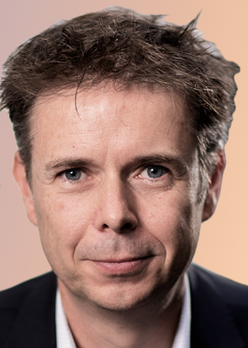
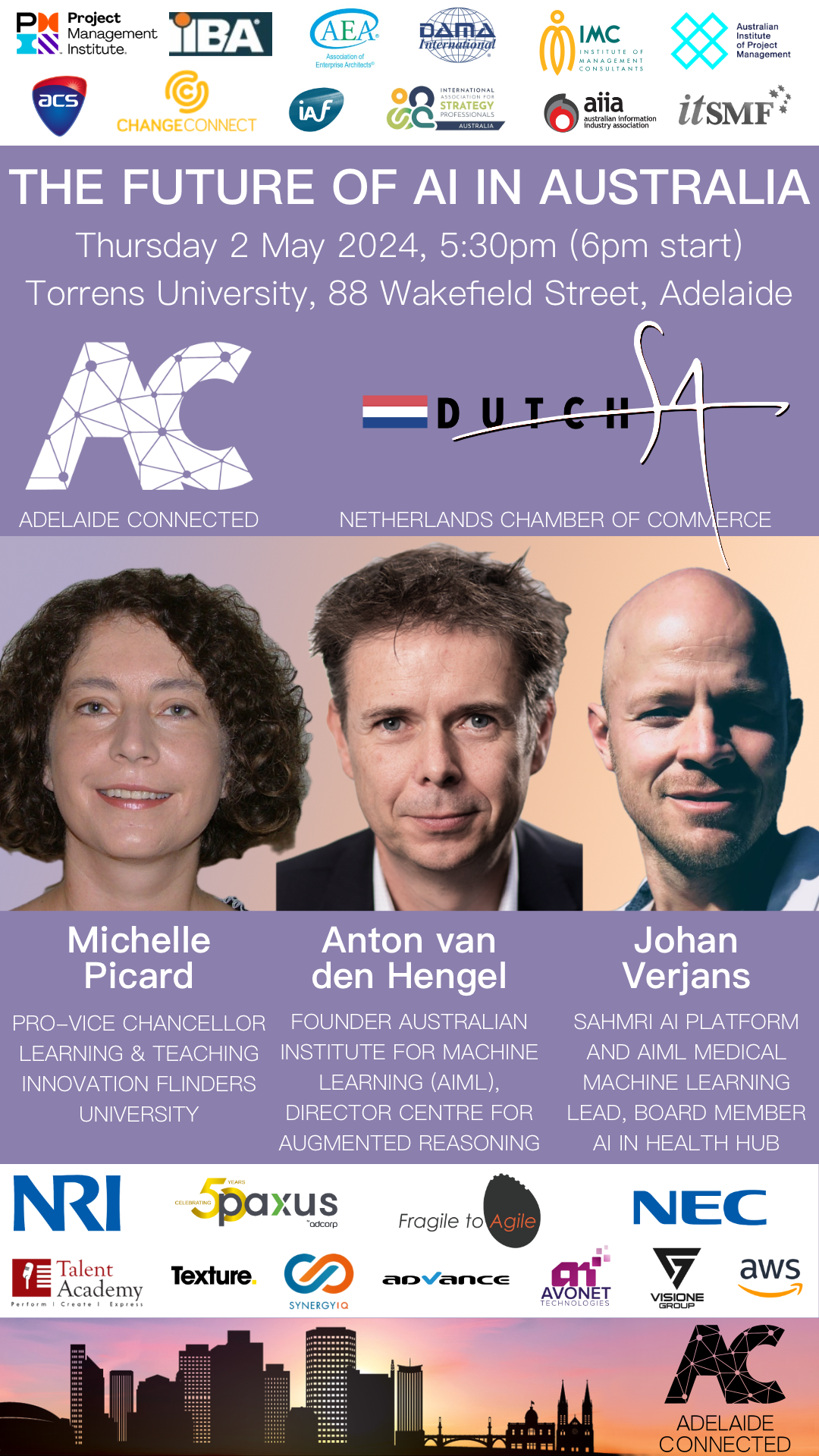

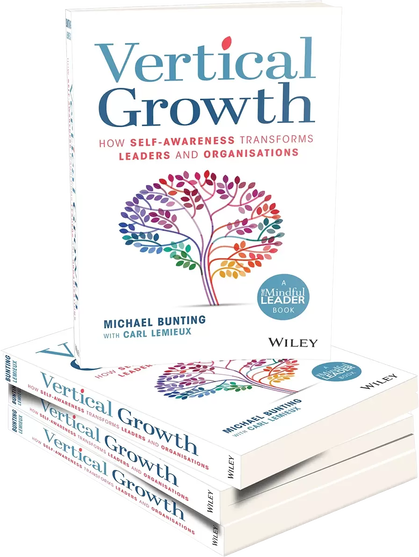
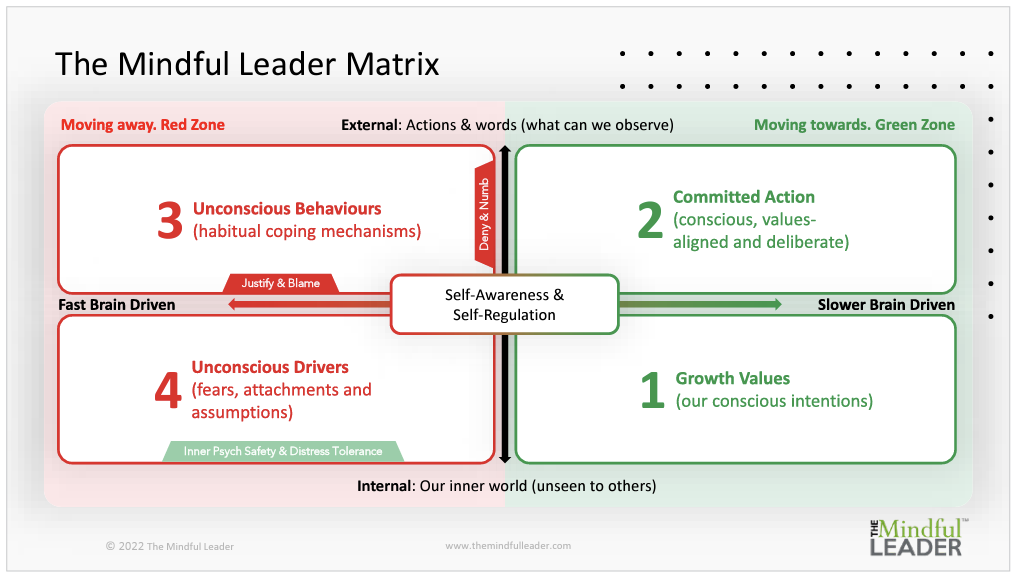
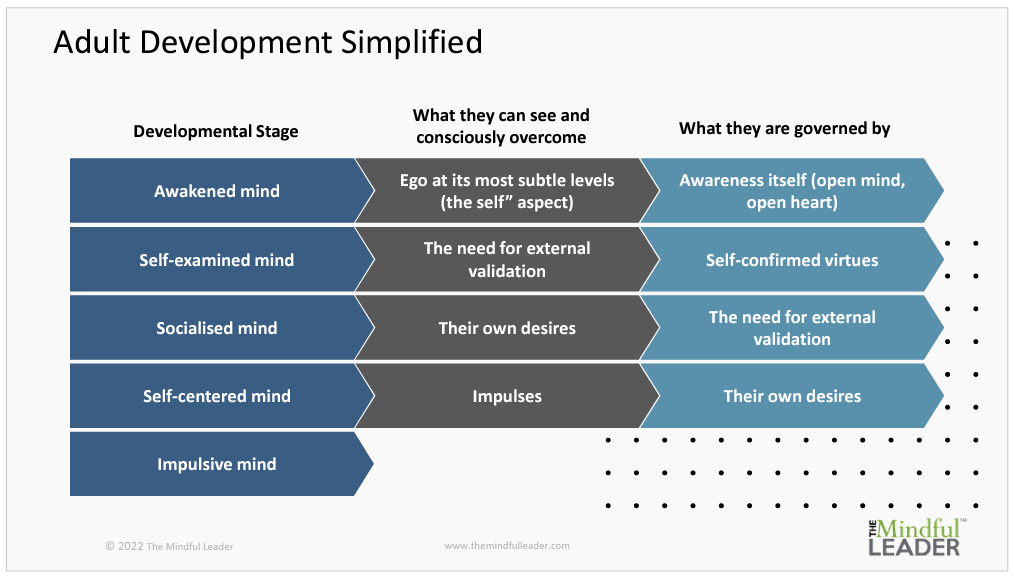
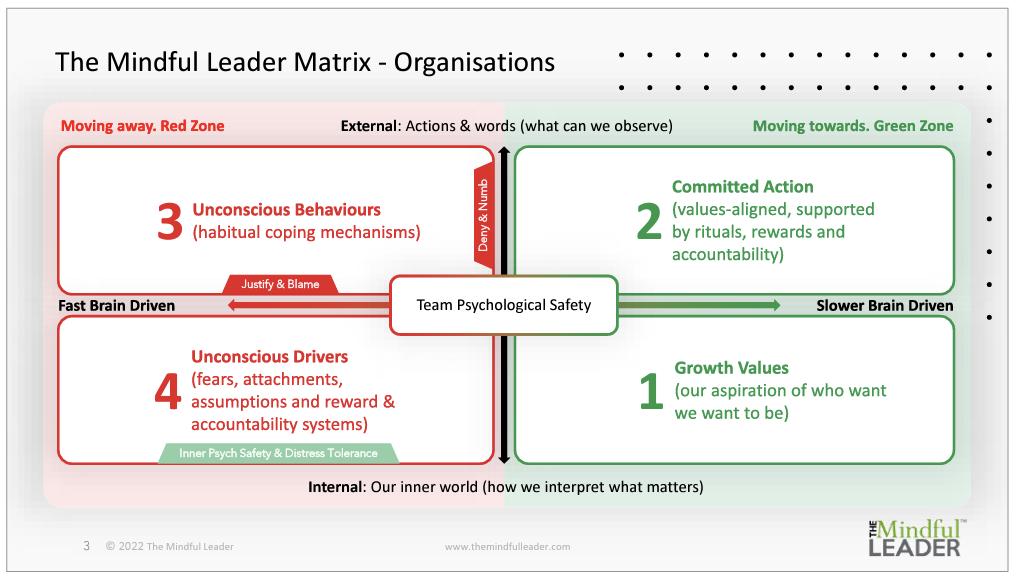
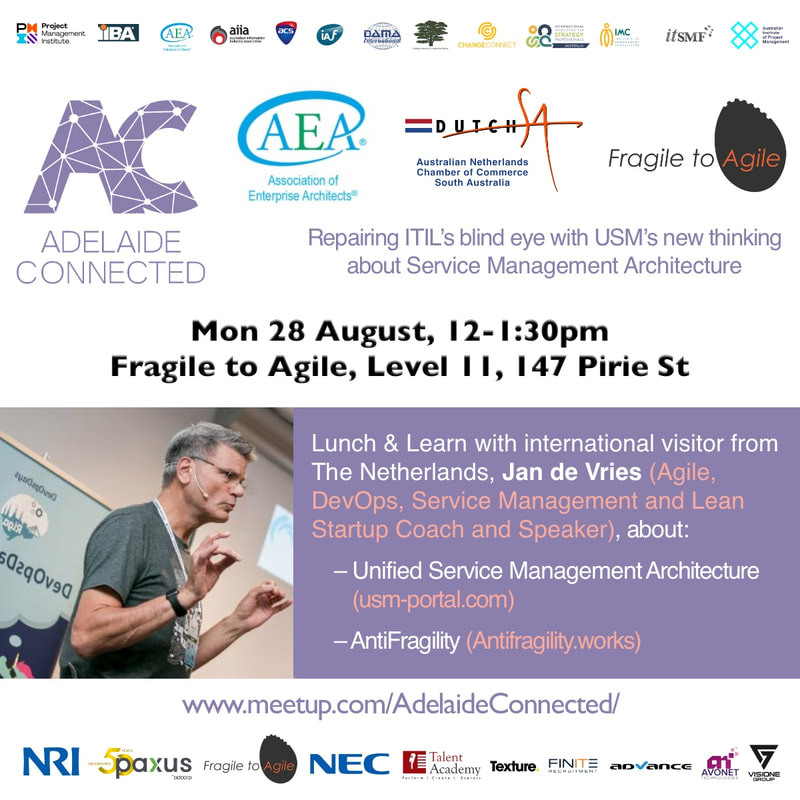



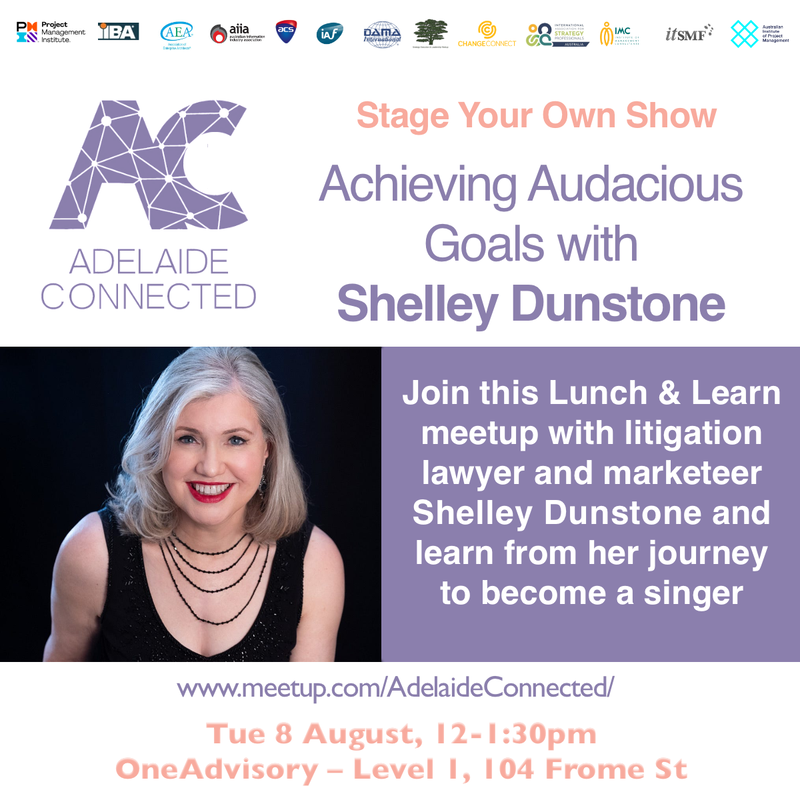









 RSS Feed
RSS Feed
